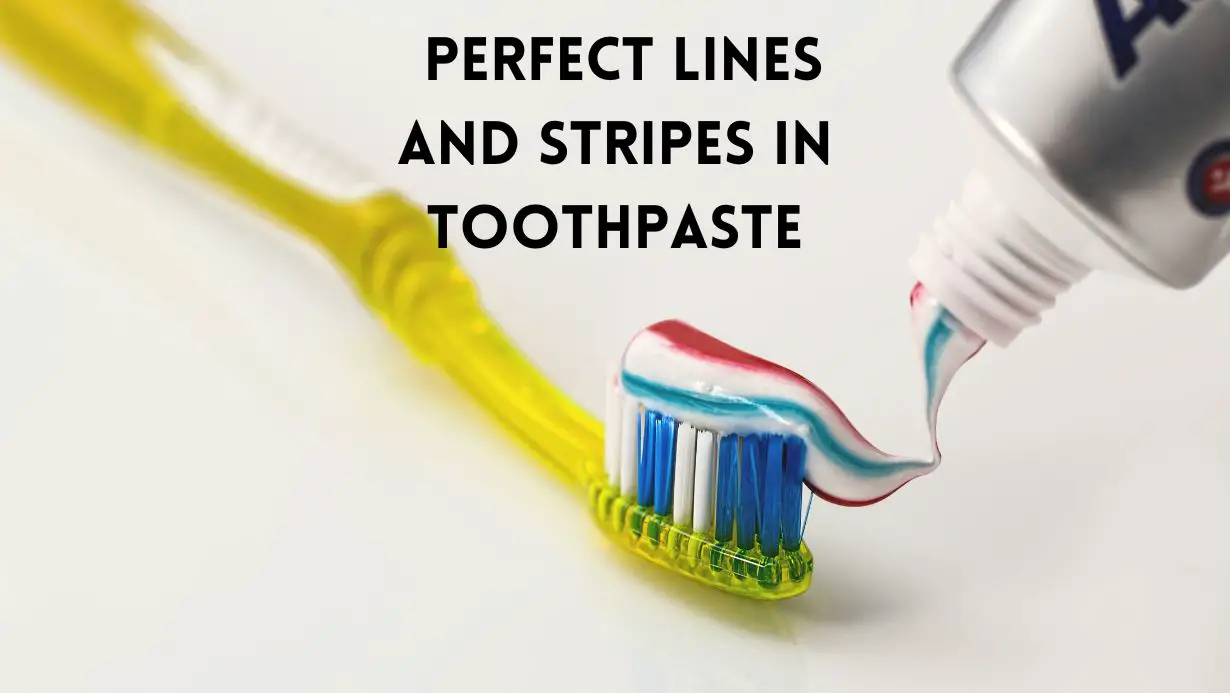
We’ve all been there. You’re standing in front of the bathroom mirror, toothbrush in hand, about to start your day. But before you can even put toothpaste on your brush, you have to wait for that perfect line of toothpaste to come out of the tube. How does it always seem to come out in a perfect line? It’s not by chance. In this blog post, we will explore how toothpaste comes out in perfect lines and the science behind it.
Note: Toothpaste is a Bingham plastic fluid which behaves as a newtonian fluid after certain amounts of shear stress.
The Science of Toothpaste
Toothpaste is a viscous material that is pushed out of a tube by the force of a plunger. The science behind this process is actually quite simple.
When a tube of toothpaste is squeezed, the force of the plunger creates a pressure difference between the inside and outside of the tube. This pressure difference causes toothpaste to flow from the area of high pressure (inside the tube) to the area of low pressure (outside the tube).
The cross-sectional shape of most toothpaste tubes is designed to create an even flow of toothpaste as it is dispensed. This allows for consistent lines of toothpaste to be extruded with each squeeze of the tube.
Reynolds Number and Laminar Flow In Toothpaste
Toothpaste is not a solid. It’s classified as a liquid because of its flowing property, which means it still follows the laws of fluid mechanics.
The small pressure you apply to toothpaste can only trigger laminar flow. Laminar flows refer to slow moving streams in which the streamlines are not mixed together.
All flows can be broken down into three main types: laminar, turbulent, and transitional. The number of Reynold’s (occurring in published equations) indicates the behavior of the flow, as follows: Re<2000 represents laminar flow and Re>4000 represents turbulent flow. The intermediate numbers represent a transition between these two states.
How Toothpaste is Manufactured
The process of making toothpaste is actually quite simple and has remained largely unchanged for many years.
First, all of the ingredients are combined into a large vat and mixed together until they form a smooth paste.
Then, this paste is pumped into tubes where it will be stored until it is needed.
When it is time to use the toothpaste, the tubes are placed into a machine that squeezes out the toothpaste in perfect lines onto a conveyor belt. From there, the toothpaste is cut into individual pieces and packaged for sale. It’s really that simple!
How do the Stripes get into Striped Toothpaste?
Toothpaste is one of those products that we use every day, but have you ever wondered how it comes out in such perfect lines? It turns out, there’s a pretty interesting process that goes into making striped toothpaste.
Here’s a quick rundown of how the stripes get into your toothpaste:
#1) The colors are first mixed together in large vats.
#2) Then, the mixture is put into a machine that extrudes it into long tubes.
#3) After that, the tubes are cut into small pieces and placed into molds.
#4) Finally, the molds are cooled and the toothpaste is ready to be packaged!
So there you have it! The next time you’re brushing your teeth, you can think about all the steps that went into making your toothpaste just perfect for you.
How Do They Get Lines In Toothpaste?
When you look at a tube of toothpaste, it’s easy to think that the lines are just there because that’s how toothpaste comes out. But in reality, those lines are there for a very specific reason.
Toothpaste is made up of three main ingredients: water, abrasives, and fluoride. Abrasives help remove plaque and stains from your teeth, while fluoride helps to prevent cavities. The ratio of these ingredients can vary depending on the type of toothpaste, but they are all essential for making sure your teeth are clean and healthy.
The other main ingredient in toothpaste is glycerin. Glycerin is a clear, thick liquid that helps keep toothpaste from drying out. It also gives toothpaste its smooth texture.
All of these ingredients are combined together to make a thick paste. This paste is then put into tubes and squeezed out through a small hole in the bottom. As the paste comes out of the tube, it forms perfect lines.
So there you have it! The next time you’re brushing your teeth, take a closer look at the toothpaste tube and appreciate all the hard work that went into making those perfect lines.
How Does Toothpaste Stay Striped?
Toothpaste is a viscous liquid that contains many different ingredients, including abrasives, humectants, fluoride, and colourants. When you squeeze a tube of toothpaste, the pressure forces the toothpaste to flow through a small hole in the nozzle. At the same time, the toothpaste is also pushed up against the sides of the nozzle by surface tension.
The combination of all these factors creates a “laminar flow,” which means that the different layers of toothpaste flow smoothly over one another. This is why you see distinct stripes when you squeeze out a tube of toothpaste: each layer is flowing at a slightly different speed, so they don’t mix together.
Conclusion
It is amazing how something so simple as toothpaste can be such a mystery. Who would have thought that there was an entire science behind getting toothpaste to come out of the tube in perfect lines? Next time you are at the store, take a closer look at the toothpaste tubes and see if you can figure out how they work. Until then, enjoy your perfectly-lined toothpaste!

Hi, This is Lyn, I suffer from dental sensitivity for a very long time. PowerToothpaste.com is where I share my views of various toothpaste brands, along with tips on how to use toothpaste and what to look for when purchasing.
